Insights & News Articles

The Secret of Winning the Talent War: The Only Way to Make Your Company "Irresistibly Appealing" As the "seller's market" accelerates, the competition to acquire top talent is fiercer than ever. While improving conditions like salary and benefits is necessary, it is becoming increasingly difficult to differentiate yourself from competitors based on these factors alone. In an era where AI creates efficiency in hiring, job seekers are placing more weight on human, essential elements when making their final decisions. So, how do you get candidates to choose you among countless other options? The answer lies in the strength of the culture inside your organization . 1. Satisfied Employees Are Your Strongest "Billboards" The most effective way to make your company appear attractive to job seekers is to build a powerful Employer Brand . However, this isn't achieved merely by creating a flashy recruitment website or running expensive ads. True brand power is born from the state of your current employees—when they are proud of their company culture and genuinely satisfied. Trustworthy Word-of-Mouth: Positive comments from employees who speak passionately about their company are more persuasive than any advertisement, naturally attracting other high-caliber talent. Creating a Virtuous Cycle: When talent resonates with your values and joins the team, their satisfaction radiates outward, gathering even more excellent candidates. This creates a "virtuous cycle" of recruitment. In short, before strengthening external PR, increasing internal "Culture Fit" and boosting existing employee satisfaction is the surest, most strategic path to hiring success. 2. Presenting "Psychological Safety" as a Competitive Advantage Top talents are strictly evaluating whether an environment will allow them to perform at their maximum potential. This is where "Psychological Safety" becomes a powerful appeal point. In a workplace where values do not align, employees face the stress of falsifying their true selves. However, in a culture-fit environment, individuals can express their opinions with confidence without suppressing their personality. The message that "we have the soil to respect your individuality and welcome challenges" is a massive incentive for growth-oriented talent—often more attractive than salary alone. Furthermore, this environment enhances engagement and maintains motivation to tackle difficult challenges positively. 3. Appealing the Productivity of "Resonant Teams" Excellent talent wants to work with excellent teams. A team composed of members who share common values builds trust easily and enjoys smooth communication. This increases the speed of decision-making and creates an environment where innovation is more likely to occur. "Here, you can focus on the work that matters, without being exhausted by pointless office politics or friction." Visualizing and promoting an organizational culture that promises this kind of efficiency strikes a deep chord with professionals seeking genuine "Job Satisfaction" . Summary: Appeal Isn't "Manufactured"—It "Radiates" The key to making your company attractive in the talent competition is not superficial decoration. It is creating a state where employees genuinely empathize with the company's "Mission," "Vision," and "Values". When that heat radiates outward, your company gains a unique appeal that no competitor can copy.

Hiring Practices in 2026: Navigating the AI Frontier and Winning Top Talent By 2026, the integration of Artificial Intelligence (AI) into recruitment is no longer a "new trend"—it is the baseline standard. From automating document screening to analyzing video interviews, technology has reshaped how companies find people. However, as the tools evolve, so do the risks. In a market where efficiency is commoditized, the true competitive advantage lies in how a company appeals to the human element of candidates. Here, we explore the critical risks of AI in hiring and how to build a magnetic employer brand that secures the best talent. 1. Risk and Challenge of Using AI in Your Hiring Business Practice While AI offers undeniable benefits, such as automating the screening of resumes and CVs through ATS (Applicant Tracking Systems), relying solely on algorithms presents significant challenges that businesses must manage carefully. The "Soft Skills" Blind Spot The most significant risk in 2026 is the over-reliance on data to measure human potential. AI excels at processing objective data—skills, experience, and keywords found in job descriptions. However, humans possess distinct strengths that AI struggles to evaluate accurately: creativity, empathy, complex problem-solving abilities, and leadership. If a hiring process relies too heavily on AI automation, a company risks filtering out candidates who may lack specific keywords but possess the high-level soft skills and "human touch" necessary to drive innovation and lead teams. The Trap of Homogeneity AI is often touted for its ability to reduce unconscious bias by focusing on objective data rather than attributes like gender or age. However, a subtle risk remains in how "Culture Fit" is interpreted by algorithms and hiring managers. There is a dangerous misunderstanding that "Culture Fit" means hiring people who are similar to the existing team. If AI is trained to prioritize candidates who mirror current high performers too closely, it can lead to a homogeneous organization that lacks diversity and new perspectives. True growth comes from hiring individuals who share the company's "Mission," "Vision," and "Values" at their core, even if their backgrounds and personalities are diverse. Navigating this distinction—seeking value resonance rather than "sameness"—is a key challenge for human decision-makers working alongside AI. 2. In the Competition for Talents, How Can You Make Your Company More Appealing? As AI levels the playing field regarding efficiency , the battle for talent in 2026 is won on appeal . Skilled professionals are not just looking for a paycheck; they are looking for a place where they can thrive. Strengthening Employer Branding through "Culture Fit" The most powerful tool for making your company appealing is a strong Employer Brand. This isn't built through flashy advertisements, but through the genuine satisfaction of your current employees. When employees are proud of their company's culture and satisfied with their work, they create a powerful employer brand. Positive word-of-mouth from employees who truly fit the culture is more persuasive than any corporate messaging, creating a virtuous cycle that attracts new, high-caliber talent. Focusing on Engagement and Psychological Safety To attract top talent, companies must prove they offer an environment where individuals can perform at their best. High Engagement: Candidates are drawn to companies where they can feel a sense of significance in their daily duties. When values align, employees maintain high motivation even when facing difficult challenges. Psychological Safety: Top talents seek workplaces where they don't have to suppress their true selves. An environment where values match ensures psychological safety, allowing employees to express opinions without fear and work with reduced stress. The Promise of Long-Term Growth Finally, appeal is generated by the promise of stability and team cohesion. A company that prioritizes Culture Fit signals to candidates that it values long-term relationships over short-term skill transactions. Employees who resonate with the company's vision have stronger engagement and a deeper sense of belonging, which significantly reduces turnover risk. Furthermore, teams connected by shared values communicate more smoothly and build trust faster, leading to maximized team performance and innovation. Highlighting these aspects of your organizational culture is the ultimate differentiator in the talent market. Summary In 2026, the winning hiring strategy is a hybrid one. We must use AI to handle the "volume" and "objectivity" of screening , but we must never let it replace the human judgment required to assess soft skills and true value alignment. By mitigating the risks of homogenization and focusing on a culture-driven employer brand, your company can become a magnet for the talent that truly matters.

The "Efficiency" of AI and the "Empathy" of Humans: Next-Gen Career Strategies to Win with Both As AI (Artificial Intelligence) adoption accelerates across the business world, our approach to "job hunting" is reaching a major turning point. Companies are increasingly introducing AI into their recruitment processes to pursue efficiency and fairness. However, the more technology evolves, the more critical a certain human element becomes. That element is the resonance between a company and an individual's values—"Culture Fit". This article explores a next-generation career strategy that combines the reality of "AI automated screening" with the essential perspective of "Culture Fit" to help you win the job and achieve long-term success. 1. The Reality of AI Recruitment: Mastering the "Entry" Technique In modern recruitment, we cannot ignore the impact of AI. Many companies are implementing ATS (Applicant Tracking Systems), which scan resumes and CVs to automatically screen candidates based on keywords, skills, and experience. Here, you need a strategy that understands your AI "opponent." It is crucial to align your resume with the keywords found in job descriptions and to specifically highlight your capabilities using quantitative results. This is no longer just a technique; it is practically good manners to ensure your abilities are correctly recognized. Using Generative AI to deepen your self-analysis or to polish your resume from an objective standpoint is also an effective tactic for the modern job seeker. 2. The "Deep Layer" AI Can't Measure: Why Culture Fit Matters Now However, AI screening is merely the entrance. While AI excels at processing vast amounts of data and objectively judging skills, it cannot fully assess complex human emotions or compatibility with an organization's unique atmosphere. This is where "Culture Fit" becomes vital. It’s not just about matching skills; it’s about whether you resonate with the company’s "Mission" and "Values". This alignment determines your happiness after joining the company. Retention and Engagement: Employees who align with the company's values feel more significance in their daily work and maintain higher motivation. Psychological Safety: An environment where you can express your opinions without suppressing your true self reduces stress and maximizes performance. Contribution to the Team: Teams with shared values build trust easily, enabling smoother communication and decision-making. If AI is the filter that judges "what you can do" (Skills), Culture Fit is the bond that connects "how you want to work" (Will). Only when both are present can you build a sustainable career. 3. Interview Strategy: Aim for "Resonance," Not "Homogeneity" Once you pass the AI screening, the interview will test your uniquely human "soft skills," such as empathy, creativity, and leadership. A common pitfall here is misunderstanding Culture Fit as "becoming exactly like everyone else". True Culture Fit does not mean killing your individuality to blend in. It means having diverse backgrounds but connecting at the root—sharing the same direction and vision. In the interview, in addition to the logical achievements you prepared for the AI, it is important to express your "passion"—what you value and the future you want to build—and see how it resonates with the company culture. Summary: Make Technology Your Ally, Choose with Your Heart AI recruitment systems have the potential to reduce unconscious bias and open up fairer opportunities for more people. However, the final decision to say "I want to work here" and "I want to work with this person" comes down to the connection between human hearts. AI Strategy: Use data and keywords to objectively prove your Skill Fit . Culture Fit: Use self-analysis to demonstrate your Value Resonance . Possessing both perspectives is the key to winning in the new era of job hunting.

From Hype to Reality: A Look Back at the Major Tech Shifts of 2025 As we approach the end of 2025, it is clear that this year will be remembered as the turning point where "future tech" became "daily infrastructure." While previous years were defined by the shock of new discoveries, 2025 was defined by integration. Technologies that once felt experimental have now settled into the core of our business operations and daily lives. For professionals navigating their careers, understanding these shifts is no longer optional—it is essential for survival and growth. Here is a summary of the defining technology trends of 2025 and how they are shaping the landscape for 2026. 1. The Rise of "Agentic AI" If 2023–2024 was the era of Generative AI (creating text and images), 2025 was the year of Agentic AI. AI systems have evolved from passive tools that wait for prompts into proactive agents capable of planning, reasoning, and executing complex workflows autonomously. In the workplace, this has shifted the required skill set from simply "using AI" to "managing AI." This shift is also visible in recruitment. As discussed in our previous insights, AI is now deeply embedded in hiring processes, handling everything from screening to scheduling. For job seekers, this means that understanding how to interact with these systems—while leveraging unique human strengths—is now a baseline requirement. 2. Green Computing and Sustainable Tech With the massive energy demands of advanced AI models becoming a critical global issue in 2025, the tech industry pivoted hard toward sustainability. "Green Computing" is no longer just a buzzword; it is a business imperative. We saw significant strides in energy-efficient semiconductors and innovative cooling solutions for data centers. For software engineers and IT professionals, proficiency in Green Software Engineering—writing code that optimizes energy efficiency—has emerged as a highly marketable skill. 3. The Normalization of Immersive Work (XR) This year, Extended Reality (XR) finally broke out of the gaming niche and entered the corporate mainstream. With the release of lighter, more affordable wearable devices, virtual offices became a viable alternative to Zoom calls. This technology has profound implications for Culture Fit—a core value at Skillhouse. Immersive workspaces allow remote teams to share a sense of space and presence, helping to build trust and shared values even when physically apart. Summary: In a High-Tech World, "Human" Skills Matter More Looking back at 2025, we see a paradox: the more advanced our technology becomes, the more valuable "human" traits become. As AI Agents take over execution and logic tasks, the premium on human creativity, empathy, and ethical judgment skyrockets. As stated in our guide to the AI era, soft skills like leadership and complex problem-solving are the "human-only" capabilities that AI cannot replicate. The technology of 2026 will undoubtedly bring more change. The key to staying ahead is not to fear these waves, but to learn how to surf them. By viewing AI as a partner rather than a rival, you can position yourself for success in the coming year. Are you ready to update your career strategy for 2026?

The "Defensive" Skill That Raises Market Value: Best Practices for Cloud-Native Security Implementation In the modern era where Digital Transformation (DX) is accelerating, the mainstream of system development is shifting to "Cloud-Native." While rapid development utilizing containers and microservices is possible, traditional security measures (perimeter defense premised on on-premises) are no longer sufficient to protect complex systems. There is now a strong demand for infrastructure engineers and developers to have "Cloud-Native Security" skills, implementing security throughout the entire development lifecycle. What is Cloud-Native Security? This is an approach to protect applications built with cloud-native technologies (containers, microservices, serverless, etc.) tailored to their specific characteristics. Whereas the conventional model was based on the idea of protecting with a "castle wall (perimeter)," cloud-native requires the continuous protection of the entire "dynamic environment." The core concepts are "Shift Left," which involves building security in from the early stages of development, and "DevSecOps," where development, operations, and security collaborate. Implementation Best Practices Valued in the Job Market What specific practices are required? Here are the main best practices that increase market value. 1. Security Integration into the CI/CD Pipeline Automate security checks at each stage of the development process (CI/CD). Build a system to discover and fix vulnerabilities early by incorporating static analysis (SAST) at code commit, container image scanning, and dynamic analysis (DAST) before deployment. 2. Adoption of Zero Trust Architecture (ZTA) Based on the principle of "Trust Nothing, Verify Everything," all access requests are verified, even within the internal network. Minimize the risk of unauthorized access by enforcing strong authentication (such as multi-factor authentication) and the principle of least privilege. 3. Thorough Container Security Vulnerability scanning of container images, use of trusted base images, and monitoring of suspicious behavior at runtime are essential. Close attention is also required for misconfigurations in orchestration tools like Kubernetes. 4. IaC (Infrastructure as Code) Security When managing infrastructure as code with tools like Terraform, risks (e.g., opening unnecessary ports) can lurk within the configuration files themselves. Maintain a secure configuration by introducing tools that scan IaC settings. Why is the Market Value of "Engineers Who Can Defend" So High? An engineer who can implement cloud-native security is not just someone who can "develop," but someone who can "continuously deliver secure services rapidly." A security incident can fundamentally shake corporate trust. Therefore, engineers with DevSecOps knowledge who can balance development speed with security are in extremely high demand, regardless of industry or company size, leading directly to career advancement and favorable job offers. Conclusion With the spread of cloud-native, the importance of security is only increasing. Engineers who understand "infrastructure, development, and security" are the ones who will lead the IT industry going forward. Why not add "cloud-native security" to your skill set and step up to become an engineer with high market value? At Skillhouse, we support job changes that accelerate your security career.

Which is Right for You? A Thorough Comparison of Programmer Job Types: SES, Contract Development, and In-House Development When programmers and engineers consider changing jobs, their work style options are generally divided into three main categories: "SES (System Engineering Service)," "Contract Development," and "In-House Development." However, while many may know these terms, surprisingly few may accurately understand the differences in specific job duties, career paths, benefits, and drawbacks. Even the phrase "an environment where you can skill up" means vastly different things depending on the business model. To prevent a mismatch after changing jobs and build a career that truly suits you, let's first firmly grasp the characteristics of each. 1. SES (System Engineering Service) SES is a contractual arrangement where engineers belonging to one company are stationed at a client's office, which requires their technical skills, to provide technical services (labor). A key feature is that while the employment contract is with their home company, the actual work is performed at the client's site. Benefits Experience Diverse Environments: You may have the chance to participate in projects of various industries (finance, manufacturing, communications, etc.) and scales in short periods. This broadens opportunities to touch upon diverse business knowledge, different development environments, and varied technologies. Easy to Expand Your Network: By working at multiple client sites, it's an environment conducive to building a network with external engineers and contacts. Accessible Even with Little Experience: Due to the wide variety of projects, there's a tendency to find roles available even for those with relatively little experience. Drawbacks Tendency for Unstable Environments: Working hours, development rules, and workplace atmosphere change significantly depending on the client site. You must adapt to new relationships and rules every time a project changes. Decreased Sense of Belonging: Since most time is spent at the client site, the sense of belonging or attachment to your home company (the one you're employed by) can easily fade. Career Fragmentation: As job content changes with each project, it can be difficult to deeply pursue one specific technology or product. 2. Contract Development (Outsourced Development) Contract Development is a work style where a company receives an order from a client ("We want you to build this system"), develops the system or software, and delivers it as a final product. Development is primarily carried out at your own company's office. Benefits Easy Involvement in the Full Development Lifecycle: A key attraction is the ease of experiencing the entire project flow, from requirements definition with the client to design, development, testing, and delivery. Exposure to Diverse Industries: Similar to SES, you can acquire broad domain knowledge and problem-solving skills through client work across various industries. Sense of Accomplishment: Working as a team to complete and deliver a product by the deadline brings a great sense of achievement when the project is successfully concluded. Drawbacks Deadline and Budget Pressure: Being client work, development must proceed within the constraints of set deadlines and budgets. Schedules tend to be tight, and there are periods when overtime increases. Low Freedom in Technology Selection: The technologies used are often specified by the client's requirements, existing systems, or budget, meaning you can't always pursue the latest technologies. 3. In-House Development (Internal Product Development) In-House Development is a work style where you develop web services, applications, or software that your own company plans and operates. In-house engineers perform development tasks for the growth of their company's own products. Benefits Product Attachment and Sense of Contribution: You get involved with a single product long-term, allowing you to feel the satisfaction of "nurturing" a service. User feedback often comes directly, making it easy to see the results of your work. Involvement in Planning and Tech Selection: There tend to be many opportunities for engineers to proactively participate in the service's direction, planning new features, and selecting technologies to implement. Stable Development Environment: Unlike contract development, which is chased by deadlines, schedules are comparatively easier to control, allowing you to settle in and focus on quality improvement and resolving technical debt. Drawbacks Bias in Technologies and Domains: The technologies and business domains used for the in-house service can become fixed, making it difficult to broaden your technical range unless you consciously study. Service Success/Failure Directly Impacts Business: The company's revenue depends on its in-house service, so if the service doesn't succeed, there's a risk of poor business performance. High Level of Skills Required: You are often expected to be an immediate contributor, not just in development but also in proposing service improvements, so the hiring hurdle tends to be high. Conclusion: Which Fits Your Career Plan? SES, Contract Development, and In-House Development. There is no absolute answer as to "which is best" among these three work styles. If you "want to experience diverse environments anyway and find my aptitude," choose SES. If you "want to face clients and learn the entire product creation process," choose Contract Development. If you "want to grow attached to one service and nurture it carefully," choose In-House Development. As you can see, the optimal choice changes depending on your current skill level and your future career plan for what kind of engineer you want to become.

AI is Overturning Common Sense in Code Quality and Debugging For IT engineers, maintaining code quality and the debugging process are critical tasks that determine the success or failure of a project. However, as systems become more complex and the demand for development speed increases, the burden of these tasks continues to grow. "I can't spare enough time for refactoring." "I spent hours trying to identify an unknown bug." Many developers have likely had these experiences. The key to solving this deep-rooted challenge is the rapidly advancing use of "AI (Artificial Intelligence)." This article explains how AI is transforming code quality improvement and debugging tasks, specific new methods, and the skills required of engineers from now on. New Trends in AI-Driven Code Quality Improvement Traditionally, methods for ensuring code quality included establishing coding standards, pair programming, and checks using linters (static analysis tools). However, AI is further advancing and automating these methods. 1. High-Precision Code Reviews by AI AI coding assistance tools, represented by GitHub Copilot and Amazon CodeWhisperer, do more than just complete code. AI performs real-time reviews of the code written by developers. In addition to syntax errors and style violations detected by conventional linters, AI can point out potential bugs, performance bottlenecks, and security vulnerabilities. Furthermore, AI learns the project's overall context and past revision history to propose "more efficient and maintainable ways of writing." This achieves both a reduction in review time and an improvement in code quality simultaneously. 2. Advanced Refactoring Support It is not uncommon for technical debt to accumulate simply because "it's scary to touch working code." AI serves as a powerful supporter for such refactoring tasks. By presenting an existing code block to the AI and giving instructions like "Make this process more efficient" or "Improve readability," the AI generates optimized code suggestions. Developers can safely and efficiently continue to enhance the "quality" of their code simply by evaluating and adopting these proposals. The Era of "AI Assistants" for Debugging One of the tasks that troubles developers the most is debugging. Especially in complex systems, identifying the cause of a bug is extremely difficult. AI is bringing a revolution to this debugging process as well. 1. Anomaly Detection and Root Cause Analysis from Vast Logs It is impossible for humans to check all the vast log data output by a system. AI analyzes this log data at high speed, automatically detecting unusual patterns and signs of errors. AI immediately identifies "differences from normal operation" and narrows down and presents the code sections or related processes where a bug might have occurred. This frees developers from guesswork and allows them to quickly get to the core of the problem. 2. Automatic Suggestion of Bug-Fixing Code After the cause of a bug is identified, thinking of a fix is also one of AI's strengths. Based on error messages and related code snippets, the AI automatically generates a code (patch) proposal for the fix. Of course, AI's suggestions are not always perfect, but they are extremely useful as a "first draft" for the fix. By reviewing and making minor adjustments to the AI's proposal, developers can dramatically shorten the time spent on debugging. The Skills Engineers Must Truly Hone in the AI Era As AI assists with coding and debugging, will engineers' jobs disappear? The answer is "No." Rather, the quality of the skills required will change. AI is a powerful tool, but it is not infallible. It is the human (the engineer) who must ultimately judge whether the code generated by AI is truly correct and meets the project requirements, and who takes responsibility for it. Engineers of the future will increasingly be required to have "prompting skills" to give appropriate instructions to AI and "critical thinking skills" to accurately evaluate and review AI's proposals without taking them at face value. The ability to master AI not as a "threat" but as "the ultimate assistant to boost productivity" will be the mark of a high-value engineer in the market. Conclusion The evolution of AI technology is removing "simple tasks" and "inefficient time" from the development floor, creating an environment where engineers can concentrate on more creative and essential work. AI-powered code reviews and debugging assistance are no longer things of the future. Actively learning these new methods and incorporating them into your daily work is directly linked to your own skill enhancement and career development.

Technological advancements have increased the focus on objective metrics such as skills and experience, with AI-powered screening now widespread. Yet, even in this era, one factor remains indispensable: culture fit. This article explores why culture fit is essential for long-term success for both companies and job seekers. Why Successful Companies Prioritize Culture Fit: 3 Key Benefits Culture fit is not just about benefiting the company — it is equally vital for job seekers aiming to build fulfilling careers. 1. Improved Retention and Reduced Turnover The greatest advantage is retaining employees who contribute over the long term. Candidates who resonate with a company’s values and vision tend to show higher engagement and a stronger sense of belonging. As a result, turnover decreases, cutting costs related to hiring and retraining. 2. Maximized Team Performance Teams built on shared values communicate more smoothly and develop trust more quickly. This accelerates decision-making, enhances cross-department collaboration, and fosters a culture of mutual respect. The outcome is greater productivity and a stronger foundation for innovation. 3. Strengthened Employer Brand When employees take pride in their workplace culture, their positive experiences naturally enhance the employer brand. Genuine word-of-mouth is far more persuasive than advertising and creates a virtuous cycle that attracts top-tier talent. Why Culture Fit Matters for Job Seekers Culture fit is not just about benefiting the company — it is equally vital for job seekers aiming to build fulfilling careers. High Satisfaction and Motivation When your values and work style align with the company’s culture, you’re more likely to find meaning in your daily tasks. This alignment drives satisfaction and sustained motivation, even in challenging situations. Smooth Adaptation and Early Success If the company’s communication style and unspoken rules match your own, adapting becomes seamless. Stronger relationships can be built quickly, allowing you to demonstrate your abilities and make an impact sooner. Psychological Safety A workplace where you can express your opinions freely without hiding your true self is essential for well-being. When your values align with the company, you’re more likely to enjoy psychological safety and reduced stress. The “Dangerous Misconception” of Culture Fit It is critical not to confuse culture fit with hiring people who are simply similar. Overemphasis on sameness risks creating a homogenous organization that lacks diversity and fresh perspectives. True culture fit means alignment with the company’s mission, vision, and values. With this shared foundation, diverse backgrounds and personalities can still thrive together, building unity while driving growth. Skills determine what a candidate can do, but culture fit defines how they will thrive and contribute over the long term. Looking beyond surface-level factors and focusing on whether company and candidate values resonate is the key to sustainable growth for both.

The evolution of Artificial Intelligence (AI) is transforming all aspects of business, with a particularly profound impact on recruitment. It is establishing a new norm for both companies and job seekers. This article explains how AI is changing the hiring process and how candidates should adapt to these changes. The "New Norm" in Recruitment: How AI Is Changing the Hiring Landscape AI is poised to dramatically alter the world of hiring by taking over tasks like document screening and initial interviews, which have traditionally consumed a vast amount of recruiters' time. Automation and Efficiency in Document Screening Many companies now use Applicant Tracking Systems (ATS), which scan resumes for keywords, skills, and experience to automatically screen candidates. This frees recruiters from the tedious task of reviewing countless applications, allowing them to focus their time on communicating with the most promising candidates. Towards Objective and Fair Selection Selection processes conducted by human recruiters can be susceptible to unconscious bias. Because AI evaluates candidates based on objective data like experience and skills, it is expected to lead to a fairer selection process, uninfluenced by attributes such as gender, age, or nationality. AI Video Interviews and an Improved Candidate Experience In AI video interviews, the system analyzes recorded videos to assess a candidate's potential and cultural fit by examining their facial expressions, tone of voice, and word choice. This offers candidates the convenience of interviewing anytime, anywhere. Furthermore, AI chatbots automate interview scheduling and answer basic questions, enabling smoother communication and enhancing the overall candidate experience. 3 Actions Job Seekers Should Take in the Age of AI As the hiring process evolves, job seekers must also adapt. Understanding the nature of AI and preparing strategically is the key to success. 1. Create Application Documents with ATS in Mind To pass the initial AI screening, it's crucial to tailor your application documents. Carefully read the job description and ensure your resume concretely reflects the required keywords (job duties, skills, experience). Avoid abstract language and include quantitative achievements to improve your evaluation by the AI. 2. Hone and Showcase Your Uniquely "Human" Skills While AI excels at routine tasks and data analysis, it still struggles to evaluate advanced soft skills like creativity, empathy, complex problem-solving, and leadership. These are human strengths. In your interviews, be prepared to share specific anecdotes demonstrating these skills. It is crucial to appeal to the human interviewers who ultimately hold the decision-making power. 3. Make AI Your Ally, Not Your Enemy Job seekers should also actively use AI. You can leverage generative AI for self-analysis, creating practice questions, and conducting mock interviews. Analyzing how well your resume matches a job description by feeding it to an AI can also be effective. By mastering AI tools, you can make your job search more efficient and effective. Conclusion The AI revolution in recruitment has only just begun. It holds the potential to make hiring more efficient and effective for companies while offering a more objective and streamlined process for job seekers. Understanding this wave of change and adopting a mindset of coexisting with AI will be essential for success in the years ahead.

The COVID-19 pandemic significantly transformed Japan’s job market. What was once an “employer-driven market” has now shifted to a “candidate-driven market,” especially in the IT industry. With the rise of remote work and accelerated digital transformation (DX), demand for tech talent continues to grow. Growth is particularly strong in fields like AI, cloud computing, and cybersecurity. For skilled professionals, this is an ideal time to take the next step toward building a future-ready career. The Impact of COVID on Japan’s Job Market Let’s take a look at how the overall job market in Japan has evolved since the pandemic began. Early COVID Period (2020 – mid-2021): Hiring Freezes and the Rise of Online Recruitment During the initial outbreak, many companies temporarily froze or scaled down hiring. Industries dependent on face-to-face services, such as hospitality, tourism, and retail, saw a sharp decline in job postings, making it a challenging, employer-dominated market. However, this period also saw the rapid adoption of online interviews, reducing geographical barriers and enabling candidates to explore opportunities beyond their region. Remote work also began to gain significant traction and become a standard practice. Mid-COVID to Post-COVID (Late 2021 – Present): Strong Recovery and Labor Shortages As economic activity resumed, companies reignited their hiring initiatives. The job-to-applicant ratio steadily increased, and Japan’s job market fully shifted to a candidate-driven phase. Essential services and specialized professions now face serious labor shortages. At the same time, rising living costs are encouraging more workers to seek better pay and work conditions—further fueling mobility in the job market. Unique Shifts in the IT Industry and the Skills That Will Be in Demand Unlike other industries, the IT sector saw robust growth even during the pandemic. While many companies paused hiring, IT firms faced soaring demand driven by the need for secure remote infrastructure and the explosive growth of online services like e-commerce, SaaS, and online conferencing. Since then, IT professionals have become central to companies' survival and innovation strategies, with high demand for roles such as software engineers, IT consultants, project managers, and data scientists. In the post-COVID era, the demand for advanced tech skills is intensifying. Talent with expertise in areas like: Artificial Intelligence (AI) Blockchain Cloud Technologies Cybersecurity ...are now more valuable than ever. With remote work now a standard option, tech professionals can build flexible, location-independent careers with wider access to top-tier opportunities. Conclusion: Now Is the Time to Seize the Opportunity In the post-COVID job market, the value of IT professionals continues to rise. By sharpening your skills in growth areas like AI and cloud computing, you can dramatically expand your career possibilities. Companies are increasingly offering flexible working styles and attractive compensation packages to secure the best talent.






